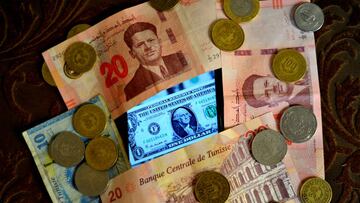What does euro dollar parity mean for businesses and consumers?
The Euro and the US Dollar have reached parity. What does this mean for the private sector and public in both geographies?

For the first time in two decades, the Euro and the US Dollar have reached parity, meaning that they are exchanging at the same rate. Between the two currencies, around six trillion dollars/euros are traded on the international market each day. The last time the two currencies reached parity was in 2002, when the paper and coin forms of the Euro were released. Since then, the Euro has maintained its position as the second most sought-after currency in the world.
The economies of the United States and the European Union are deeply intertwined and when trouble begins to bring in one, it is likely to appear in the other.
Who wins when the Euro falls?
Since the early 2000s, the Euro has traded above the dollar, allowing firms in the European Union to purchase to buy more goods at a cheaper rate. For European businesses, the decrease in the value of the Euro is bad news. Economists believe parity could lead firms to lower their output as their production costs increase, which could lead to the laying off of workers.
This happens because the goods are bought in USD. So, when you can exchange $1.00 for €1.20.
The decrease in value of Europe has come largely as a consequence of the Russian invasion of Ukraine. Across Europe, countries, firms, and households are paying significantly higher prices as energy resources became much more expensive as a result of the Russian invasion of Ukraine. Although the EU has been able able to decrease its financial assets has fallen since the war began, their economic situation is still being impacted in a significant way.
Over the last year, inflation in the European Union hit 8.6 percent last month. This rate is lower than what is being seen in markets in the United States, where prces have risen 9.1 percent over the last year; moving up 1.3 percent in June alone.
The decline seen over the last year has been unprecedented, falling over $0.18 since mid-July 2021.
Response from the European Central Bank
In an event with moderated by Bloomber’s Francine Lacqua, heads of central and major banks around the world, spoke to how their orangaizations were preparing for the uncertainity of the future.
Two of the panel members were Federal Reserve Chair Jerome Powell and European Central Bank President Christine Lagarde who were they were joned by Bank for International Settlements General Manager Agustin Carstens and Bank of England Governor Andrew Bailey.
During the event, ECB President Lagarde noted that “an element” of what they are doing at Central Banks is “art, whether or not your characterize it as art or not.”
“It is not just driven by sciences and we know that models have had their shortfalls, particularly at turning points.”
We are at one of these turning points and once again the models have failed. Much of the inflation seen globally is being by high energy prices. Lagarde noted as much later in the panel saying that the models used by the ECB had “vastly underestimated” both energy prices as well as supply chain “bottle necks” which “were [...] expected to clear much faster.”
If monetary policy is an art average people across the world do not like the picture being pained.
Many Europeans are paying higher electricty bills than ever before.
Seniors in the United States are cutting down on the number of meals they eat because their social security payments have been consumed by inflation.
Rates of hunger, and in some cases, famine, have increased dramatically over the last year.
As the war continues to rage on and Europe looks to new energy markets, the Euro is likely to continue to struggle against the dollar. We will all be watching the arts and science of central banks to see how they respond during this economic turning period.






